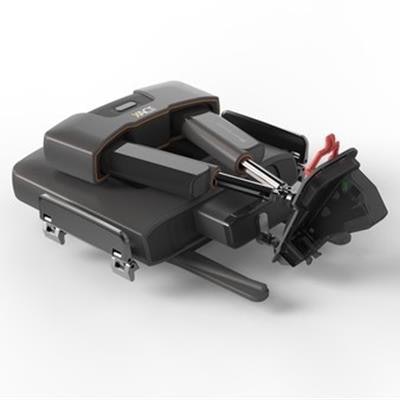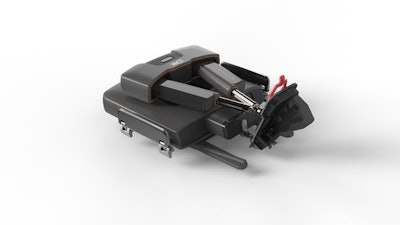
XACT Robotics presented its lightweight, hands-free robotic system for guiding percutaneous interventional procedures at the recent RSNA 2019 meeting in Chicago.
 XACT Robotics' hands-free robotic system for percutaneous interventional procedures. Image courtesy of XACT Robotics.
XACT Robotics' hands-free robotic system for percutaneous interventional procedures. Image courtesy of XACT Robotics.The XACT robotic system allows clinicians to conduct image-based planning and navigation as well as insert and steer instruments for percutaneous interventional procedures, all using one device. The robotic system is compatible with a wide range of imaging modalities, can function with various instruments, and allows for midprocedure adjustments based on real-time imaging data. It is also light enough to be mounted directly on top of a patient and includes motion sensors that compensate for patient breathing.
The robotic system takes roughly eight minutes to send an instrument from the skin to a target, according to the company. The learning curve for using the device is about five cases, compared with roughly 150 practice cases required to learn standard CT-guided techniques.
A preliminary study covering 50 patients found an average tip-to-target error of 1.5 mm for percutaneous needle insertion, better than the error rates reported with other methods (which typically range from 1.7 mm to 3 mm).
The device received the CE Mark in 2018, followed by U.S. Food and Drug Administration clearance in October.



















